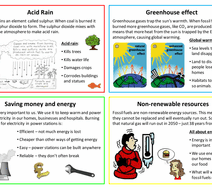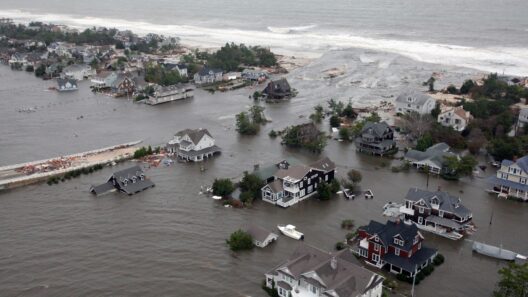In the grand tapestry of our environment, the construction industry often appears as a shadowy thread, woven intricately into the fabric of societal progress. The metaphorical hammer and nail—tools of human advancement—serve not only to erect buildings but also to forge a path towards an impending ecological crisis. This exploration into “The Hidden Footprint” reveals the less visible, yet profound, impact that construction has on global warming.
The construction sector is a behemoth of economic activity, contributing substantially to national GDPs and infrastructures. However, this prosperity comes at a significant cost to the planet. Conspicuously, the industry is responsible for nearly 39% of global carbon emissions, according to prominent sustainability studies. This statistic acts as a clarion call, demanding the scrutiny of unsustainable practices that persist beneath the surface.
To unravel these implications, it is essential to dissect each component of the construction process. From material extraction to demolition, every phase carries emissions—an invisible fog that continues to accumulate. The extraction of raw materials, essential for construction projects, initiates a cascade of environmental repercussions. The quarrying of stone, mining of metals, and harvesting of timber not only deplete natural resources but also release copious amounts of greenhouse gases into the atmosphere. Furthermore, these activities disrupt local ecosystems, irrevocably altering habitats and biodiversity.
Concrete, the cornerstone of contemporary construction, stands as a sentinel of environmental degradation. The production of cement, a key ingredient, is notably energy-intensive, responsible for approximately 8% of global carbon emissions. This process requires high-temperature kilns that burn fossil fuels, releasing carbon dioxide at an alarming rate. Thus, as society strives for concrete jungles that symbolize progress, it paradoxically nurtures an escalating climate crisis. The irony is palpable: in nurturing our built environment, we are fueling the very blaze of global warming.
Infrastructure development exacerbates this conundrum, as transportation remains a pivotal facet of construction. Heavy machinery, diesel-powered vehicles, and transportation of materials contribute significantly to emissions. These contribute to what can be termed the “construction fuel paradox”—where we seek advancements with one hand, while the other extends towards our planet’s degradation. Research indicates that reducing reliance on fossil fuels in construction operations is crucial if we are to reverse the trends of climate change.
The hidden footprint extends beyond emissions; it encompasses the monumental waste generated by the industry. Consider that construction and demolition processes are responsible for nearly 40% of the total waste generated worldwide. This waste often finds solace in landfills, where organic materials decompose and release methane—another potent greenhouse gas. Furthermore, the resources spent in creating these materials often go unnoticed in a linear economy, where products are made, used, and disposed of without consideration for reuse or recycling. Herein lies an opportunity: the transition towards a circular economy could mitigate waste while also moderating emissions.
Beyond the immediate footprint lies the profound impact of building energy consumption. Buildings, once erected, consume a staggering amount of energy for heating, lighting, and cooling. A report from the International Energy Agency signals that the buildings sector consumes nearly 30% of global energy, thus intimately linking construction with the broader energy framework. Initiating reforms, such as embracing green technologies and energy-efficient designs, can significantly reduce operating emissions. The allure of sustainability becomes apparent, revealing the potential for structures to become allies in the fight against climate change rather than adversaries.
Innovative approaches and practices are emerging to combat the profound effects of construction on global warming. Sustainable materials—biodegradable, recycled, or responsibly sourced—offer a beacon of hope. Using bamboo instead of traditional timber, for instance, not only mitigates deforestation but also promotes carbon sequestration. Investing in local resources reduces transportation emissions, creating a symbiotic relationship between economy and environment. Architects and engineers are increasingly prioritizing designs that maximize natural light and ventilation, minimizing energy needs and embracing nature as a design partner.
Regulatory frameworks worldwide are also evolving, aiming to hold the construction industry accountable. The integration of sustainability metrics into building codes, coupled with incentives for low-carbon options, is instrumental in pushing for environmentally responsible construction. Governments can play a pivotal role, spearheading initiatives that allocate funding for green retrofitting and mandating sustainability practices within construction contracts. It is a clarion call to action, one that resonates with the urgent need for accountability in the face of global warming.
Public consciousness is awakening to the ramifications of construction practices. As the demand for transparency and accountability grows, companies find themselves challenged to adopt sustainable methodologies. The power of consumer choice increasingly influences market trends, propelling businesses towards ethical production systems. This societal shift is not merely a trend; it is an imperative for survival, as the collective conscience recognizes the necessity of joining the battle against climate change.
Moreover, collaboration holds the key to overcoming the hidden footprint of construction. Architects, engineers, urban planners, and environmentalists must unite, fostering interdisciplinary dialogues that inspire innovative solutions. Collaborative projects that integrate sustainability from inception to completion can transform the landscape of construction, creating environmentally viable options that resonate with all stakeholders. This partnership infuses not only creativity but also urgency into the discourse on sustainable development.
In summation, the hidden footprint of construction is an intricate web laced with complexity and consequence. From raw material extraction and energy-intensive processes to waste generation and long-term resource consumption, the industry embodies both promise and peril. As the shadow of global warming looms ever larger, it is imperative to illuminate the path towards sustainable construction practices. By embracing innovation, regulatory accountability, and societal cooperation, the construction industry can transcend its current environmental predicaments, emerging not as an adversary but as a cornerstone in the collective response to climate change.








